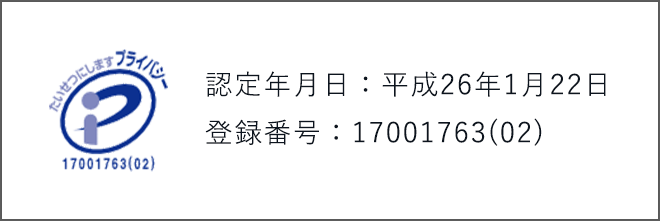ガバナンス
TBMは、「進みたい未来へ、橋を架ける」というMissionを掲げています。持続可能な社会と豊かな自然環境を将来世代へと引き継ぐための事業活動、そして会社の持続可能な成長を実現するため、TBMは、高い倫理観を持って、経営環境の変化に迅速に対応する仕組みの強化に取り組んでいます。
ガバナンス体制
TBMは監査役会設置会社です。事業に精通した社内取締役と客観的な視点を持つ社外取締役で構成する取締役会が重要事項を決定し、取締役の業務の執行状況を監督しています。
体制図

(2024年8月末現在)
各機関の役割等
| 名称 | 構成 | 役割・決定方法 |
|---|---|---|
| 取締役会 | 取締役:8名(うち、社外取締役5名) *代表取締役を含む |
当社の重要事項を決定し、取締役の業務の執行状況を監督します。取締役会規程に基づき、原則月一回の開催に加え、必要に応じて臨時開催し、法令および定款に定められた事項ならびに経営の基本方針、中期経営計画、年度事業予算、また、営業、事業所、契約、組織、人事、労務、財産等に関する重要事項の決議を行います。監査機能および透明性向上のため、監査役が出席します。 取締役の定員数は16名以内とし、任期は選任後1年以内に終了する事業年度のうち最終のものに関する定時株主総会の終結の時までとしています。選任は、株主総会において株主の議決権の3分の1以上を有する株主が出席し、出席した当該株主の議決権の過半数をもって決定されます。 |
| 監査役 監査役会 |
社外監査役:3名 | 監査役は、監査役監査規程に基づき、取締役会に出席し、取締役の職務執行が法令または定款に違反し、適法性を欠くおそれがある場合には、取締役会に報告します。この事により、違法な事態を未然に防止し、株主の負託に応えるとともに、当社の社会的信用の維持向上に寄与します。監査役会は、原則月1回の開催に加え、必要に応じて臨時開催しています。また、必要に応じ、本社および各事業所に関して、業務現状の聴取、重要な会議体の議事録ならびに稟議書その他重要文書の閲覧、そして会計に関する帳簿、書類の調査等を実施します。 監査役の定員数は4名以内とし、任期は選任後4年以内に終了する事業年度のうち最終のものに関する定時株主総会の終結の時までとしています。選任は、株主総会において、株主の議決権の3分の1以上を有する株主が出席し、出席した当該株主の議決権の過半数をもって決定されます。 |
| 会計監査人 | – | 会計監査人は、本社、工場その他必要のある拠点に対して、会社法に基づく監査を実施しています。また、会計監査人は、定款に基づき、株主総会で選任され任期を1年とします。 |
(2024年8月末現在)
コンプライアンス
コンプライアンスに対する基本的な考え方
当社は、コンプライアンスを経営基本方針の重要項目とし、全ての役員および従業員に対して、法令、条例、規則等の遵守および高い倫理に基づいた行動を求め、誠実かつ公正な経営および業務の遂行に努めています。
TBM行動規範
TBMは、社会から存在を期待される企業であり続けるため、すべての取締役、執行役員および従業員が、事業に関連する日々の活動において遵守すべき事項を「TBM行動規範」として定めています。この規範は、2017年1月13日に取締役会の決議を経て制定されました。
TBM行動規範について詳しくはこちら
コンプライアンス委員会
コンプライアンスの取り組みを推進する体制として、コンプライアンス委員会を設けています。同委員会は、役員および従業員の法令等に違反する行為、また、その指示、命令、教唆、強要、許可、承認または黙認に対する行為への防止策および是正措置を講じています。コンプライアンス違反等が確認された場合には、代表取締役に報告、また、経営に重大な影響を与えると認められる事項については取締役に報告されます。
社内通報制度
法令等に違反する行為、またはその疑いがあるという情報に接した役員および従業員が、その情報を直接提供できる社内通報制度「コンプライアンス相談窓口」を設置、運営しています。「コンプライアンス相談窓口」には、社外の窓口として、社外監査役が対応しています。また、内部通報者のプライバシーを保護するため匿名での相談も受け付け、通報者の利益を図っています。
研修
役員および従業員向けに、コンプライアンスへの関心を高め、正しい知識を周知徹底する目的で研修を行っています。
リスク管理
リスク管理への基本的な考え方
「内部統制の基本方針」に基づき、当社において発生する可能性のあるリスクを未然に防止するための管理体制を構築・維持しています。発生リスクへの抑止・対応に係る機能を整備することにより、当社の事業計画および業務運営の円滑な進展に資することを目的としています。
リスクの評価手順
下記の手順に従ってリスク評価と対応を行います。
1.リスクの識別
当社の事業計画および業務運営を阻害する可能性のある事象を把握し、定義、特定する。定義、特定されたリスクがどのような段階で存在するかを識別する。
2.リスクの分類
識別したリスクを、全社的なリスクと業務プロセスにおけるリスクか、過去に生じたリスクと未経験のリスクか等の観点から分類する。
3.リスクの分析
識別・分類したリスクについて、当該リスクが生じる可能性およびリスクがもたらす影響の大きさを分析する。
4.リスクの評価
当該リスクの重要性を見積もり、見積もったリスクの重要性に照らして、対応策を講じる。
5.リスクへの対応
リスク評価を受けて、当該リスクへの適切な対応を選択する。リスクへの対応にあたっては、評価されたリスクについて、その回避、低減、移転または受容等、適切な対応を選択する。
リスクの対応体制
日常のリスク管理については、当社の代表取締役 CEOが指揮し、取締役会は連帯して当該管理体制の監督にあたり、管理本部長はそれを補佐します。また、取締役会は、会社法上の機関として、リスク評価について的確な認識をもって経営判断に反映させ、業務運営を適正に指揮します。また、リスクの発生に備え、発生時に即時、的確に対応できる体制(以下、「リスク対応体制」)を策定し、必要に応じリスク対応体制を更新します。リスク発生時には、リスク対応体制に定めるところに従い、速やかかつ正確に所定の担当部署および担当者に通報します。通報により、代表取締役はリスク対応体制を発動します。代表取締役が即時に発動を指令できない状況にあるときは、管理本部長が代わってこれを指令します。
品質管理と製品安全の確保
LIMEX製品の安全性確保は、お客様に安心・信頼をお届けすることであり、企業が社会に対して果たすべき責任であると認識し、当社の事業活動の基盤として位置付けています。当社は、行動規範での「製品の安全」と「製品の環境配慮」の明記に加え、製品安全に関する基本方針を定め、LIMEX製品の安全性強化に取り組んでいます。また、LIMEX製品の安全管理に関して、適切な情報開示を実施しています。当社製品の原材料については化管法*1および化審法*2に基づいて安全性を確認しています。また、SDS*3やchemSHERPA*4を準備し、製品の安全に関する情報をお客様を含めたサプライチェーン全体で管理・把握できる体制を実施しています。
*1:特定化学物質の環境への排出量の把握および管理の改善の促進に関する法律*2:化学物質の審査および製造等の規制に関する法律
*3:製品安全データシートの略。世界的な基準であるGHSに準拠し、国内外のお客様に適切な安全情報を提供します。
*4:製品中に含まれる化学物質の情報伝達のためのフォーマット。経済産業省が主導する。
情報セキュリティとプライバシー

当社の主要製品の一つは名刺であり、お客様の個人情報の適切な管理は事業活動の基盤の一つと考えています。2014年に一般財団法人日本情報経済社会推進協会のプライバシーマークを取得し、個人情報保護に努めています。特にお客様の個人情報を取り扱う社員には個人情報保護についての教育を実施しています。



